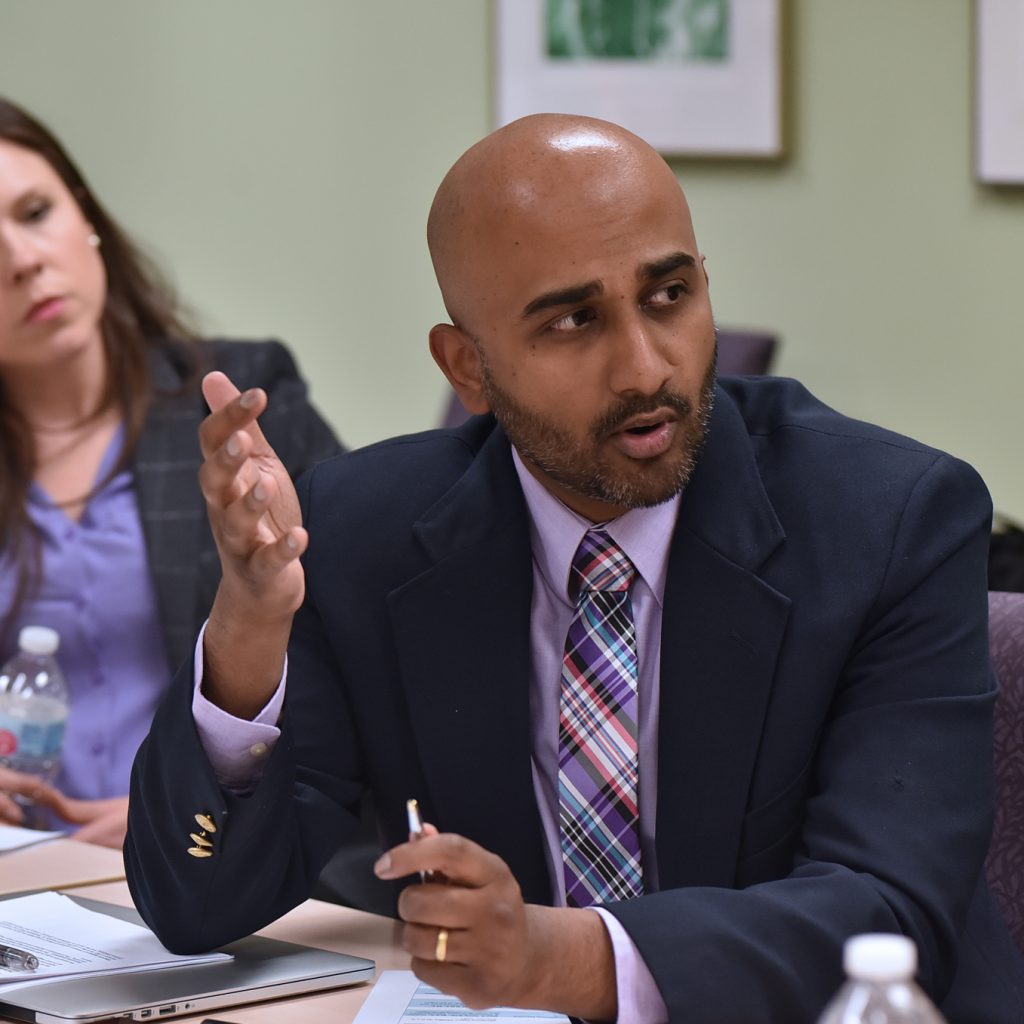A Q&A with CHRT Health Policy Fellowship alumnus Romesh Nalliah
In 2018, Romesh Nalliah participated in CHRT’s Health Policy Fellowship. Now the associate dean for patient services and clinical professor of dentistry at the University of Michigan School of Dentistry, Romesh spoke with us about what he’s working on now–a number of equity initiatives–and how the fellowship training impacted his career.

What are you working on now?
Leading up to 2020, my research was focused on the link between hospital outcomes and dental outcomes. But after the murder of George Floyd, I started to reflect on how all of the studies I saw showed that Black Americans have worse outcomes. I started thinking that I should study how race affects oral health.
A couple of years ago I did a study looking at nationwide CDC data, and found that there has been a consistent gap between Black Americans and all other Americans in regards to oral health for the last 15 years. In fact, outcomes for Black Americans in 2014 are comparable to outcomes for white Americans in 1999.
Another recent study we did found that, in the last 20 years, there has been no significant change in the proportion of Black students admitted to dental school. A few months after we published that study, a study came out showing similar results for medical schools.
Thanks to my time at CHRT in 2018, I also began to advocate for an improvement in adult dental Medicaid. After many meetings in Lansing by my group and many others, on January 1st of 2023 we saw a huge change in the reimbursement rate.
Michigan had one of our nation’s worst adult dental reimbursement rates, and now it’s one of the best. There’s still advocacy work to do however, since our state has not attached any outcome measures to the increased rates, which means sustainability through budgetary cycles could be fragile unless we can change that.
What would you say makes this work important?
There are so many ways that oral health affects overall health, with dozens and dozens of studies supporting the association. Famously, there are associations between diabetes and oral health as well as between cardiovascular disease and oral health. However, not everyone knows that oral health is also associated with preterm birth and low birth weight. Additionally, we’ve done a study looking at stem cell transplants, and found a six day longer length of stay for patients who had concurrent periodontal disease. In fact, we found there was $85,000 in additional hospital charges, and a higher reinfection rate. We’ve done other studies with similar findings too. The mouth is part of the human body. So when there’s uncontrolled infection in the mouth, it affects outcomes in other surgical procedures.
How was your fellowship experience?
I participated in the fellowship in 2018, but for me the seeds were planted a decade earlier. Like many young researchers, I was excited to get published or do presentations. We were doing all these publications and presentations, and everyone was patting us on the back, and then one day I was presenting and two women stood up and said they wanted to thank our group because they used several of our papers to change legislation in their state. And I thought to myself, “Oh my goodness, they’ve done so much more than we’ve done with this data.”
Ten years later when I moved to Mighican and encountered CHRT, I thought it seemed like a great opportunity to learn. Because of CHRT, I now see the publication as the start of the process, and not the end. It’s just as important to get your findings in front of people that make a difference, like legislators and health policy advisors. That’s been a complete reframing for me.
I’ve interacted with legislators significantly more often since my time at CHRT, and because I’m in Michigan, I often ask CHRT for help. CHRT has also connected me with people who have changed the course of my research, including guiding me to more research on opioid over-prescribing in dental care.
The connection to the policy fellows was especially significant. Every time I go to Lansing, I try to meet up with as many of the policy fellows as possible – I continue to learn so much from them. They are sacrificing so much for their work, and they have such a passion and dedication. It’s very similar to researchers actually.
What are your plans for the future?
The fellowship has made me look at research in a different way. Now, I feel an urgency to publish a paper so we can move on to the real work, which is how does this affect the way that we practice dentistry?
Now, as the associate dean for patient services, my goal is to take some of what I’ve learned about quality and patient safety in hospital settings and apply them to everyday dentistry.
My dream is to reduce the operational separation between medical and dental. As an example, when my wife and I had our first baby I was shocked that, in all the prenatal appointments, there was not one conversation about oral health. Yet there’s 15 years of research about how oral health affects birth weight and preterm birth. One thing I’d love to see is a referral to a dentist as soon as someone begins their journey in starting a family.
And it’s similar for cardiovascular disease, or diabetes. All these medical specialties should be requiring a trip to the dentist. It’s complex right now, because dentists are not co-located with hospitals and there are different insurance pathways, but that should not stop us from doing the right thing. I would like physicians to think about ensuring that conditions in the mouth are stable when they’re trying to address a systemic complaint.